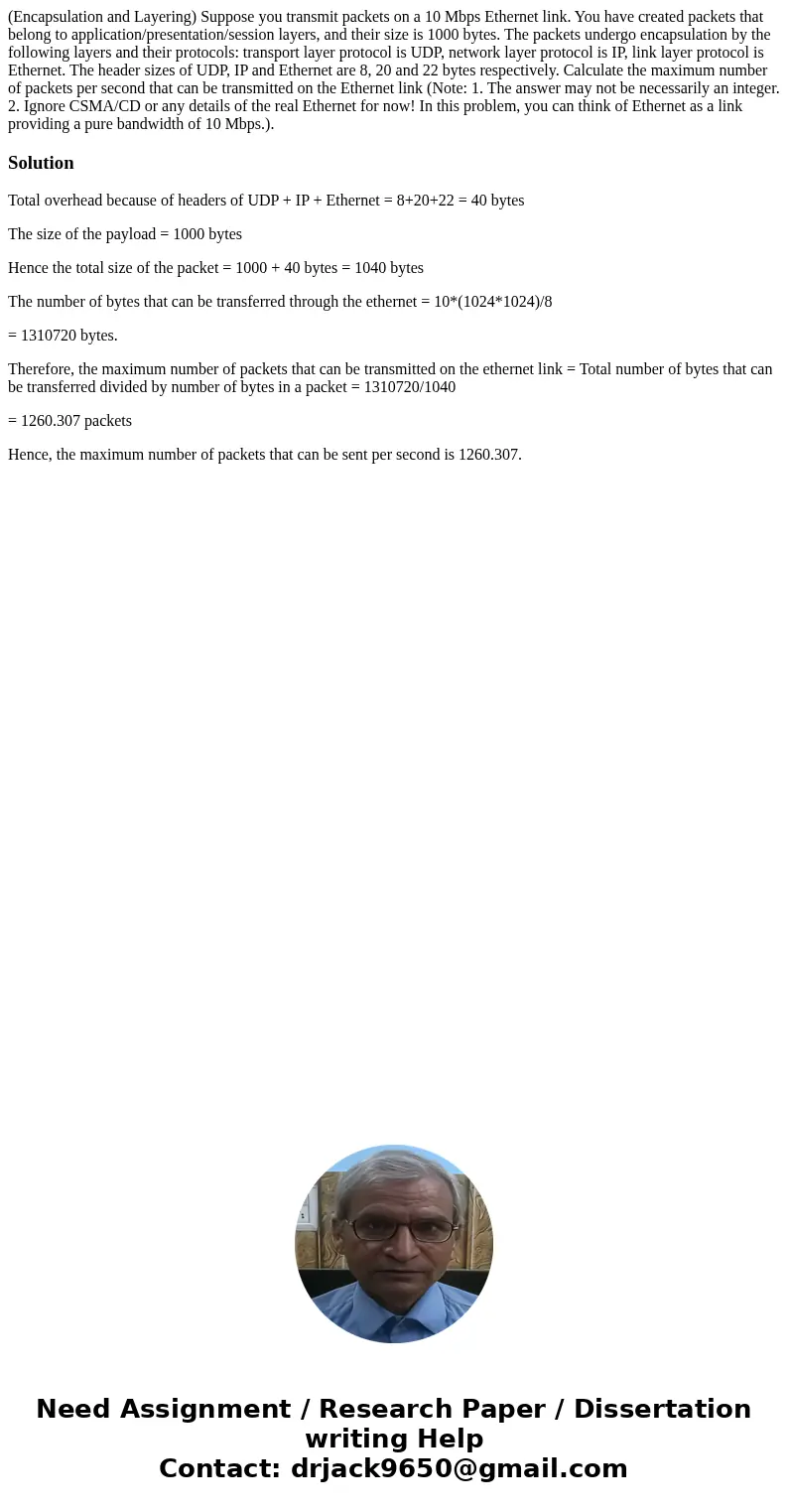Encapsulation and Layering Suppose you transmit packets on a
(Encapsulation and Layering) Suppose you transmit packets on a 10 Mbps Ethernet link. You have created packets that belong to application/presentation/session layers, and their size is 1000 bytes. The packets undergo encapsulation by the following layers and their protocols: transport layer protocol is UDP, network layer protocol is IP, link layer protocol is Ethernet. The header sizes of UDP, IP and Ethernet are 8, 20 and 22 bytes respectively. Calculate the maximum number of packets per second that can be transmitted on the Ethernet link (Note: 1. The answer may not be necessarily an integer. 2. Ignore CSMA/CD or any details of the real Ethernet for now! In this problem, you can think of Ethernet as a link providing a pure bandwidth of 10 Mbps.).
Solution
Total overhead because of headers of UDP + IP + Ethernet = 8+20+22 = 40 bytes
The size of the payload = 1000 bytes
Hence the total size of the packet = 1000 + 40 bytes = 1040 bytes
The number of bytes that can be transferred through the ethernet = 10*(1024*1024)/8
= 1310720 bytes.
Therefore, the maximum number of packets that can be transmitted on the ethernet link = Total number of bytes that can be transferred divided by number of bytes in a packet = 1310720/1040
= 1260.307 packets
Hence, the maximum number of packets that can be sent per second is 1260.307.

 Homework Sourse
Homework Sourse